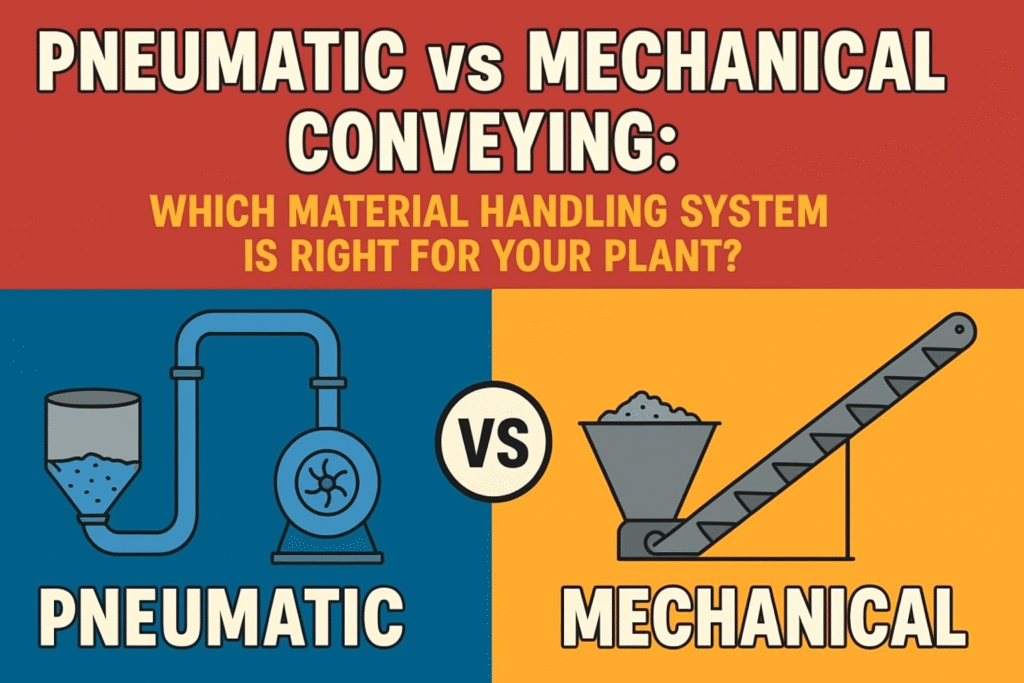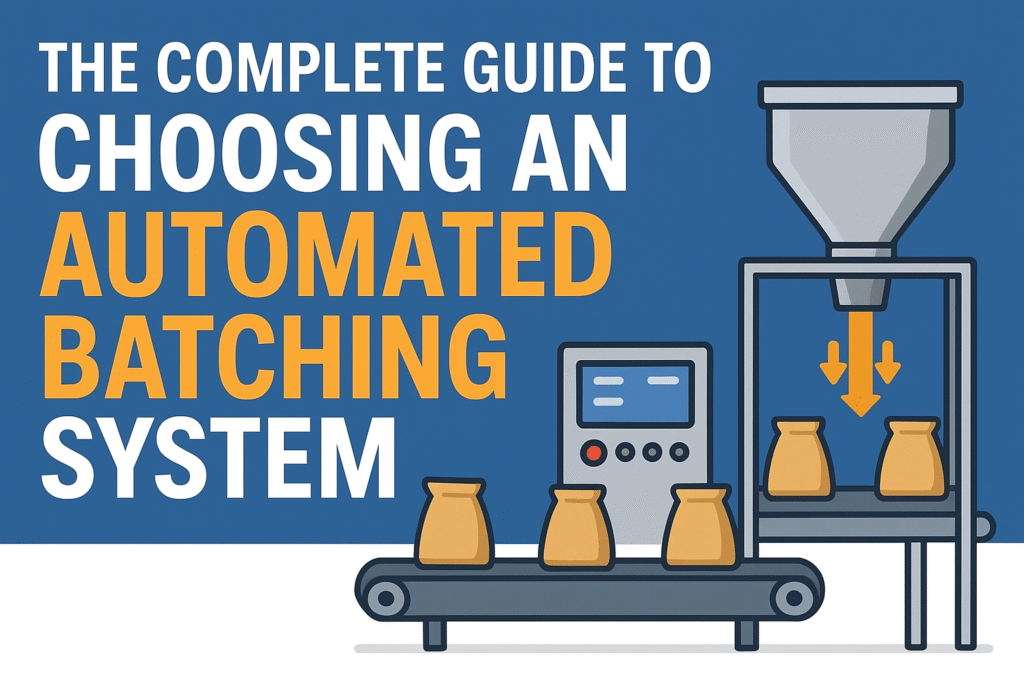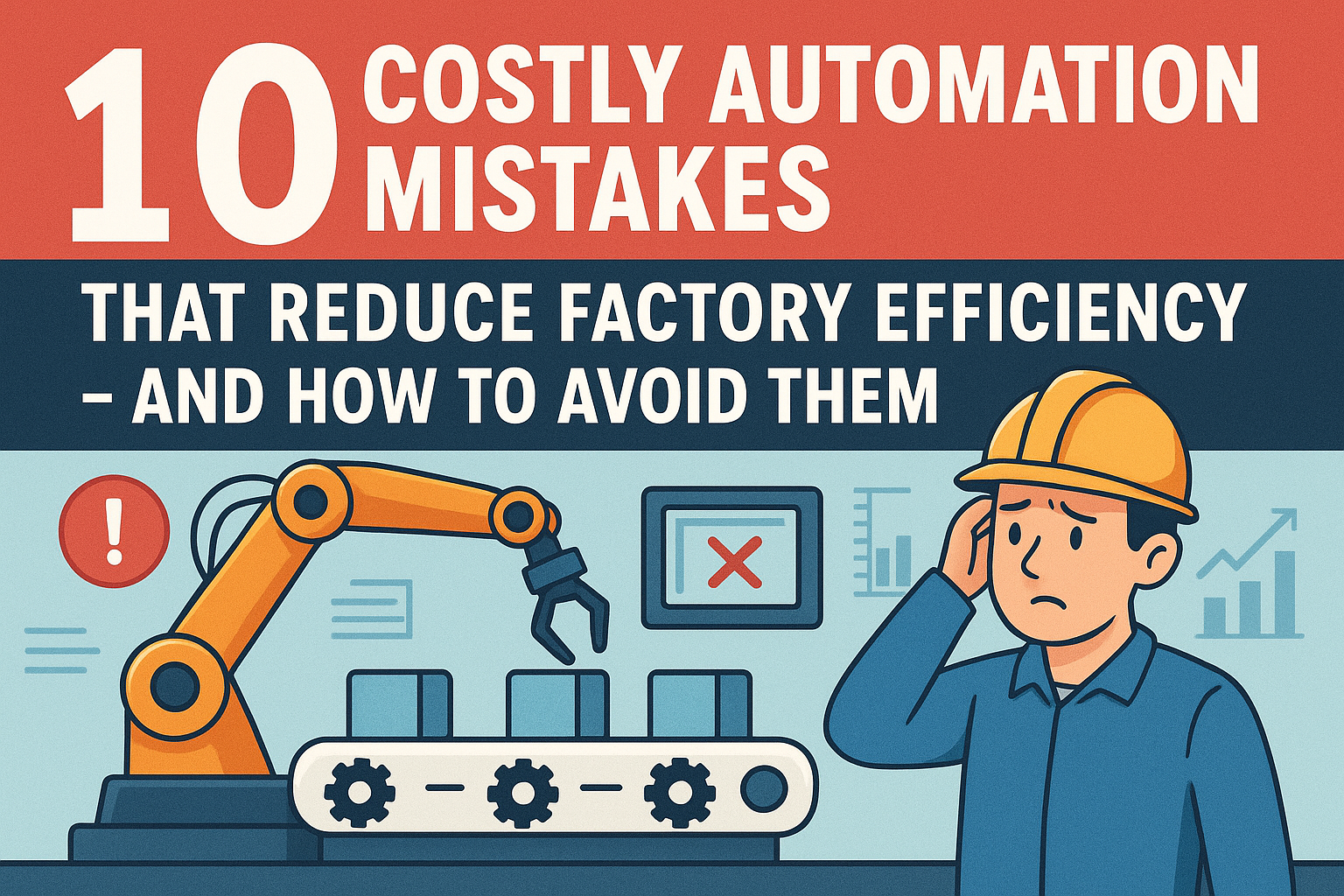
In modern manufacturing industries, material handling plays a critical role in determining operational efficiency, product quality, safety, and cost-effectiveness. Whether you’re in plastics, chemicals, pharma, food, or pigments, how you transfer raw materials from storage to processing units can directly impact your bottom line.
Two major types of conveying systems dominate the market: pneumatic conveying and mechanical conveying. Each has its own set of strengths and limitations depending on the material type, distance, environment, and level of automation desired.
If you’re setting up a new factory or upgrading an existing line, choosing between these systems is not just a technical decision — it’s a strategic one. In this article, we’ll provide a complete comparison of pneumatic vs mechanical conveying and help you decide which one fits your industrial needs.
Pneumatic conveying is a method of transporting powdered or granular materials through a closed pipeline using air pressure or vacuum. It is widely used in industries that handle fine powders or ingredients that require contamination-free transfer.
Pneumatic systems can be classified into two types:
- Pressure conveying systems – use high-pressure air to push materials over long distances.
- Vacuum conveying systems – use suction to pull materials, ideal for short to medium distances.
This method is ideal for transferring materials like PVC resin, calcium carbonate, TiO2, pigments, stabilizers, additives, food powders, pharma ingredients, and more.
Mechanical conveying involves the use of physical components like belts, screws, chains, or vibrating trays to move materials. These conveyors are often used for larger or coarser materials that are not easily airborne.
Examples of mechanical conveyors include:
- Belt conveyors
- Screw conveyors
- Bucket elevators
- Drag chain conveyors
- Vibratory conveyors
Mechanical systems are more suited to materials like pellets, flakes, grains, and large granules. They are common in sectors like mining, grain handling, cement, and fertilizer manufacturing.
Key Differences Between Pneumatic and Mechanical Conveying
Here’s a deep dive into how the two systems compare across different parameters.
Pneumatic systems are ideal for powders, fine particles, and materials that must remain contamination-free. Mechanical systems are better suited for granular, lumpy, or abrasive materials.
Pneumatic conveying is much more space-efficient. The pipeline can be routed vertically or around tight corners, making it suitable for compact or multi-level plants. Mechanical systems require straight paths, more floor space, and often complex structures to maintain alignment.
Pneumatic systems are completely enclosed, making them far superior in controlling dust and maintaining a clean working environment. Mechanical conveyors often have exposed sections, which can lead to spillage, dust emissions, and higher cleaning costs.
Pneumatic conveying has fewer moving parts and therefore requires less frequent maintenance. Mechanical systems involve rotating components like belts and chains that are subject to wear and tear and need regular lubrication, alignment, and inspection.
While pneumatic systems may consume more energy due to compressors or blowers, modern systems are highly optimized for energy efficiency. Mechanical conveyors can be more energy-efficient in low-speed, high-load applications, but this often comes at the cost of higher maintenance.
Pneumatic systems can be easily integrated with PLC and SCADA-based automation platforms. At Margo Industries, for example, we offer Siemens SCADA-powered systems that provide 360-degree control of material movement, inventory levels, batching accuracy, and recipe management. Mechanical systems offer limited automation and often require manual intervention.
Pneumatic systems provide contamination-free transfer, making them ideal for pharma and food-grade applications. Mechanical systems, due to more contact surfaces and open sections, pose higher risks of contamination and cross-material mixing.
When Should You Choose Pneumatic Conveying?
Pneumatic systems provide contamination-free transfer, making them ideal for pharma and food-grade applications. Mechanical systems, due to more contact surfaces and open sections, pose higher risks of contamination and cross-material mixing.
When Should You Choose Pneumatic Conveying?
Mechanical conveying may be a better fit if you:
- Handle coarse or abrasive materials
- Need to transport material over very short distances
- Have simple layout requirements
- Are looking for low initial investment (with higher operational cost later)
- Operate in industries like cement, grain, or bulk fertilizer
That said, even in these sectors, plants are increasingly shifting toward pneumatic systems for the sake of cleanliness, space savings, and automation.
When is Mechanical Conveying More Suitable?
If your industry deals with fine powders, high hygiene requirements, complex plant layouts, or requires high levels of automation, pneumatic conveying is the preferred choice. It is particularly beneficial for:
- PVC compounding and extrusion plants
- WPC board and PVC profile manufacturers
- Plastic masterbatch and additive processing
- Pigment and chemical batch processing
- Pharmaceutical powder blending
- Food ingredient handling in cleanroom environments
At Margo Industries, we provide complete turnkey pneumatic systems with vacuum or pressure-based conveying, integrated auto weighing and batching, and SCADA controls for seamless operations.
Across India and abroad, Margo Industries has helped hundreds of plants transform their production lines through advanced pneumatic conveying systems.
Here’s what makes our solutions unique:
- Resin Cost Savings: Handle raw materials using 1-ton jumbo bags instead of 25kg bags to save packaging and logistics costs.
- Energy Efficiency: Minimized heat loss, faster batches, and optimized blower control reduce energy bills.
- Labor Reduction: Fully automatic systems reduce the need for manual material transfer and weighing.
- Accuracy in Batching: Precision weighing and recipe control improve final product consistency and reduce rejections.
- Dust-Free Working Environment: Cleaner plants lead to safer working conditions and better regulatory compliance.
- Smart Factory Ready: Our systems integrate seamlessly with Siemens SCADA and IoT platforms for full plant visibility.
Plant Aesthetics and Customer Impression: Automated plants are cleaner, more organized, and more impressive during audits or client visits.
Our pneumatic systems are engineered to handle a wide range of raw materials:
- Powders: PVC resin, calcium carbonate, TiO2, wax, stabilizers, impact modifiers
- Liquids: DOP, CPW, epoxy, tin stabilizers, DBP, DIDP
Based in Ahmedabad, Gujarat, Margo Industries brings over 50 years of expertise in pneumatic conveying and industrial automation. We serve diverse industries with custom-engineered solutions, from design and manufacturing to installation and training.
Our client-first approach, cutting-edge engineering, and focus on maximizing ROI have helped us become one of India’s most trusted partners in the field of bulk material automation.
Looking to Upgrade Your Plant’s Material Handling System?
If you’re still relying on manual transfer or outdated mechanical systems, now is the time to upgrade. Margo Industries can help you design a modern, fully automated pneumatic conveying solution that cuts costs, improves product quality, and increases throughput.
We offer free plant audits, custom proposals, and live system demos to show you the difference firsthand.
Contact Margo Industries Today
Phone:
Email: sales@margoindustries.com
Website: www.margoindustries.com
Location: Ahmedabad, Gujarat, India
FAQ
Find Out Answers Here

With proper system design (airflow, velocity, material conditioning), pneumatic conveying can handle a wide range of materials, but very sticky materials may require special treatment or hybrid systems.
Depending on material volume and operational cost savings, most clients see ROI in 12–18 months.
Yes, with ATEX-compliant designs and explosion-proof controls, pneumatic conveying is safe for combustible powders when engineered correctly.
Absolutely. We offer scalable solutions from compact lines to large, multi-silo integrated systems.



